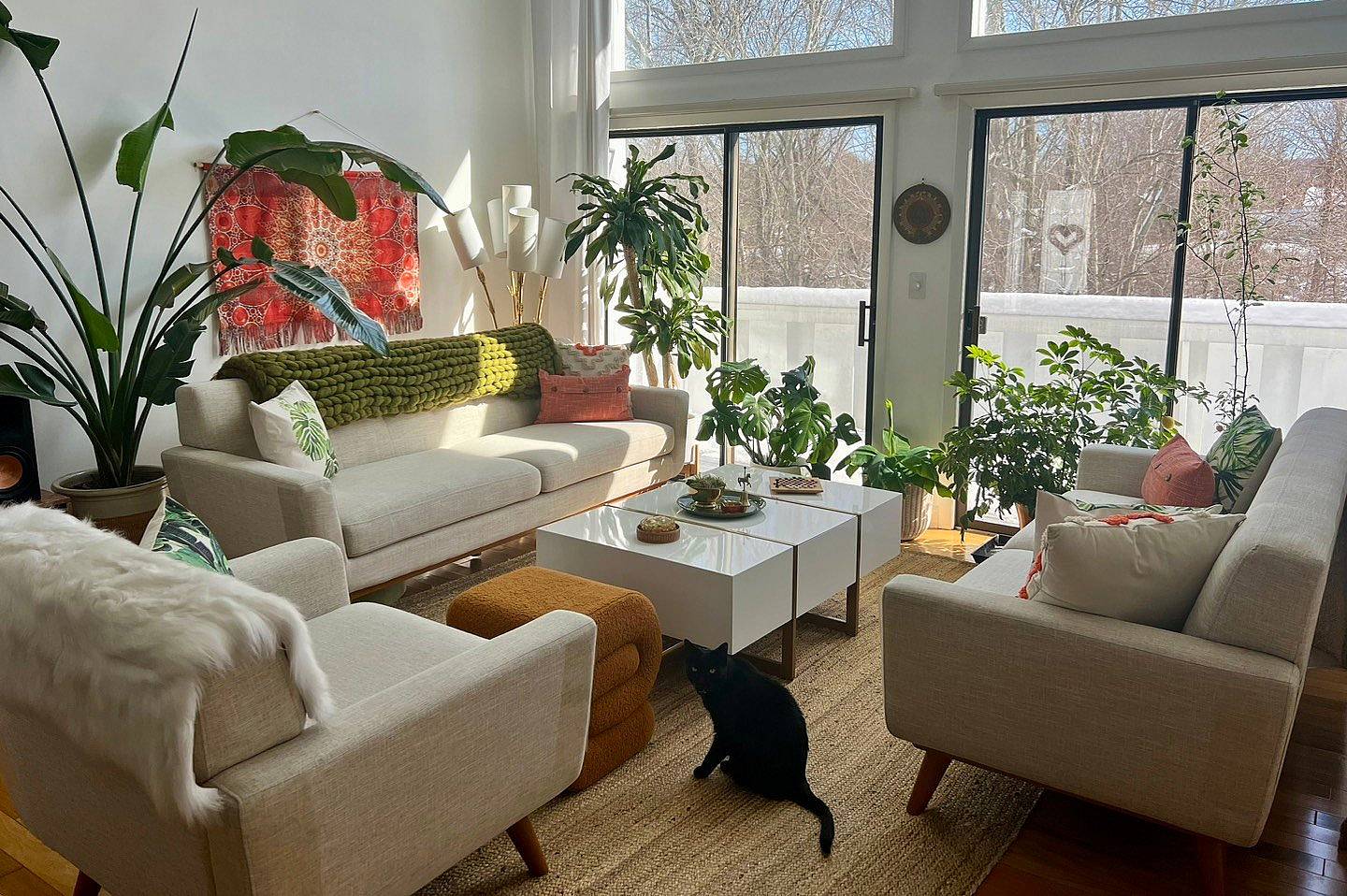There are many things I get from my mother, but a green thumb is not one of them. While my mother can nurse a sickly plant back to life with just the right amount of pruning and adjustments to sunlight and watering, I more often than not find myself hacking a plant to near death at the slightest sign of distress. “Just don’t touch it,” my husband says, whenever he sees me staring at any of our house plants for too long.
Until recently, we’ve never had enough sunlight in our home to support indoor plants, and to be honest, I had been more comfortable with a good fake that required the occasional dusting than a living, breathing responsibility. When we moved into our new house, with its tall, East facing windows, it felt like the perfect time to become plant people. And luckily, our move coincided with covid and my newfound obsession with consuming houseplant related social media content. Armed only with a dream and the delusional confidence of a woman who just watched a plant tutorial on Tik-Tok, we started our collection.
The first few plants we purchased, a clementine tree and two smaller lemon trees, we ordered online. They arrived at our doorstep wrapped tightly in brown paper with plastic bags covering the pots, securing the soil and maintaining moisture during transit. One benefit of buying plants online is that you avoid the Tetris-like experience of carefully arranging large plants in the back of your car, only to curse at the first turn when they inevitably shift and topple, dumping dirt onto your carpets and sending tiny perlite pebbles to live under your seats for the rest of time.
Once our fruit trees were mostly established and doing well in the large windows in our living room, we started to add to the collection. With each plant we purchased, it seemed we learned something new — not just about plants, but about ourselves as plant-parents. My husband quickly took to his role as the waterer and devised a schedule based on the needs of each plant. I tended to have the most success with succulents, air plants, and cactuses, which generally like to be left alone. While I am quick to diagnose and treat pests, my husband’s approach is much gentler; if it’s not actively dying, let the plant and the pest work It out like they would in nature.
We now have around 35 plants scattered throughout our home, and let me tell you: it’s work. Yet it’s the kind of work I don’t mind doing. Tending to my indoor garden takes time, effort, and energy and sometimes I wonder why we chose to make more work for ourselves as homeowners by introducing these delicate and often demanding pieces of decor to our space. When I start to feel bad for myself at the prospect of performing a particularly tricky repot, I remind myself that growth is to be celebrated, and the work that goes into fostering that growth deserves celebration too.
Too often we seek the perfect end result, with little regard for the beauty in the cultivation. It’s when we try something new, work to improve our skills, or seek new opportunities that we grow and learn about ourselves. Without the time, effort, and incredible patience it takes to grow anything worth having, we cannot fully appreciate that end result. In my own life, and my work with students and families, I make a conscious effort to recognize and revere the process and not just the product. When we recognize that work is not just synonymous with labor, but also with growth, we can give ourselves grace for the mistakes we make, and celebrate our successes with deeper appreciation.


